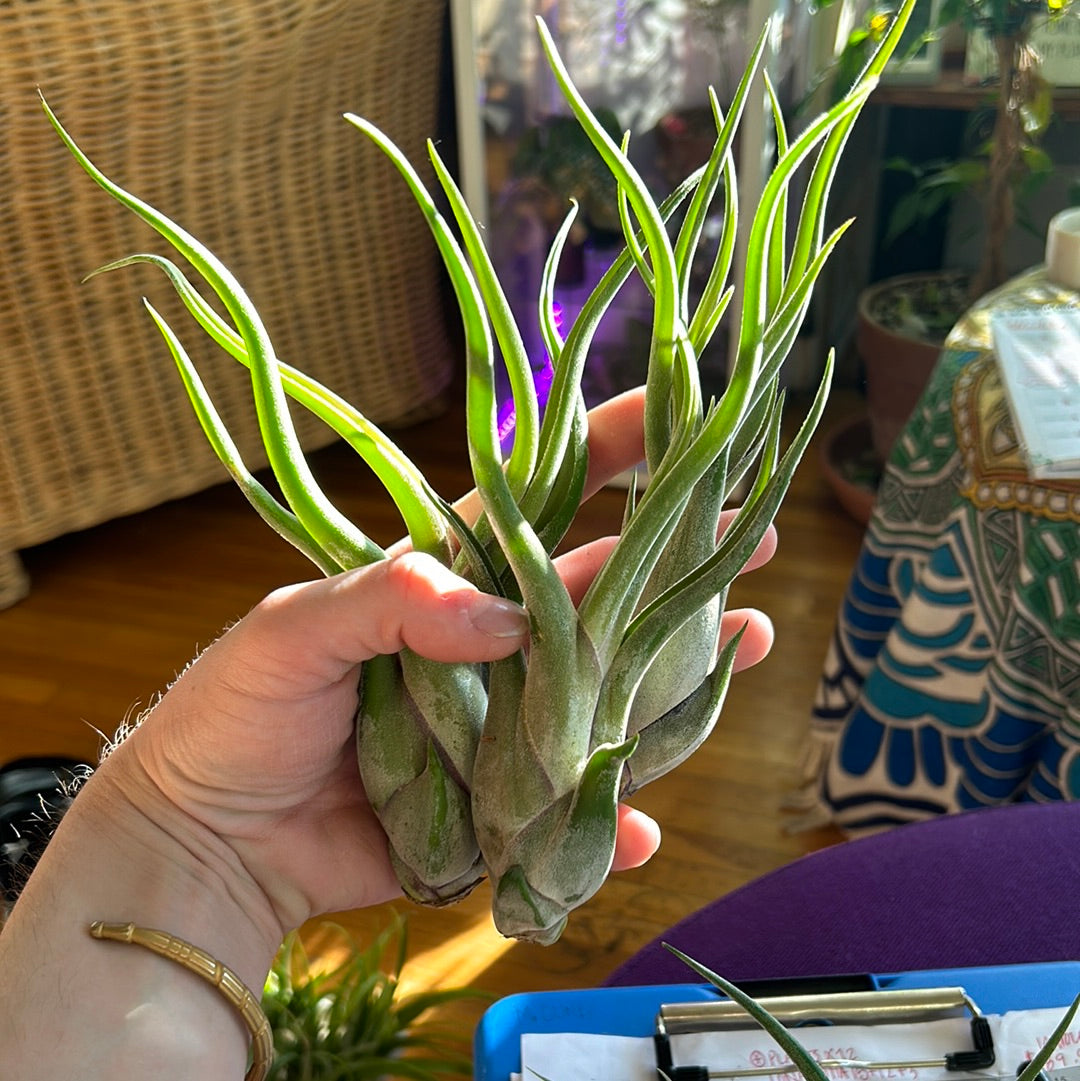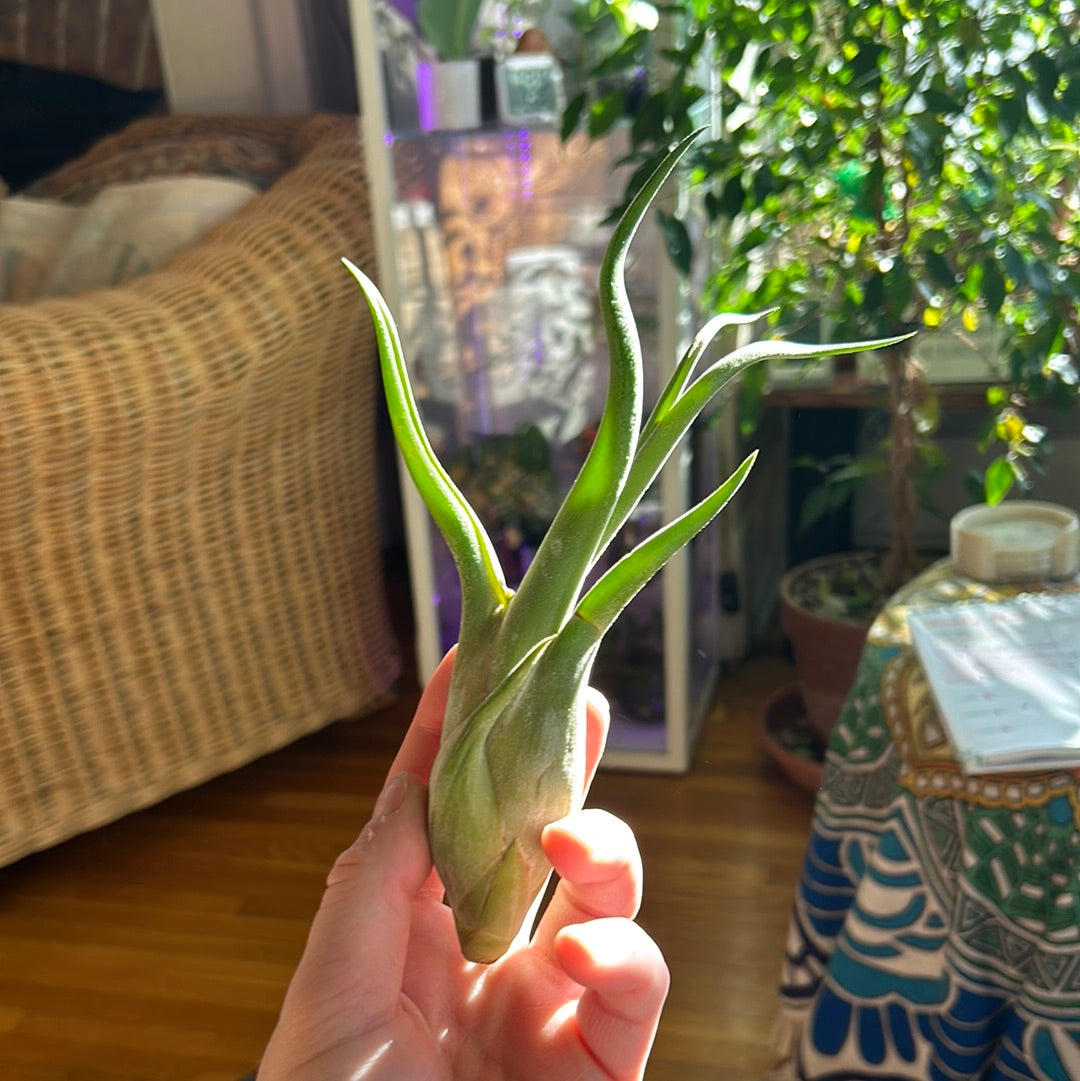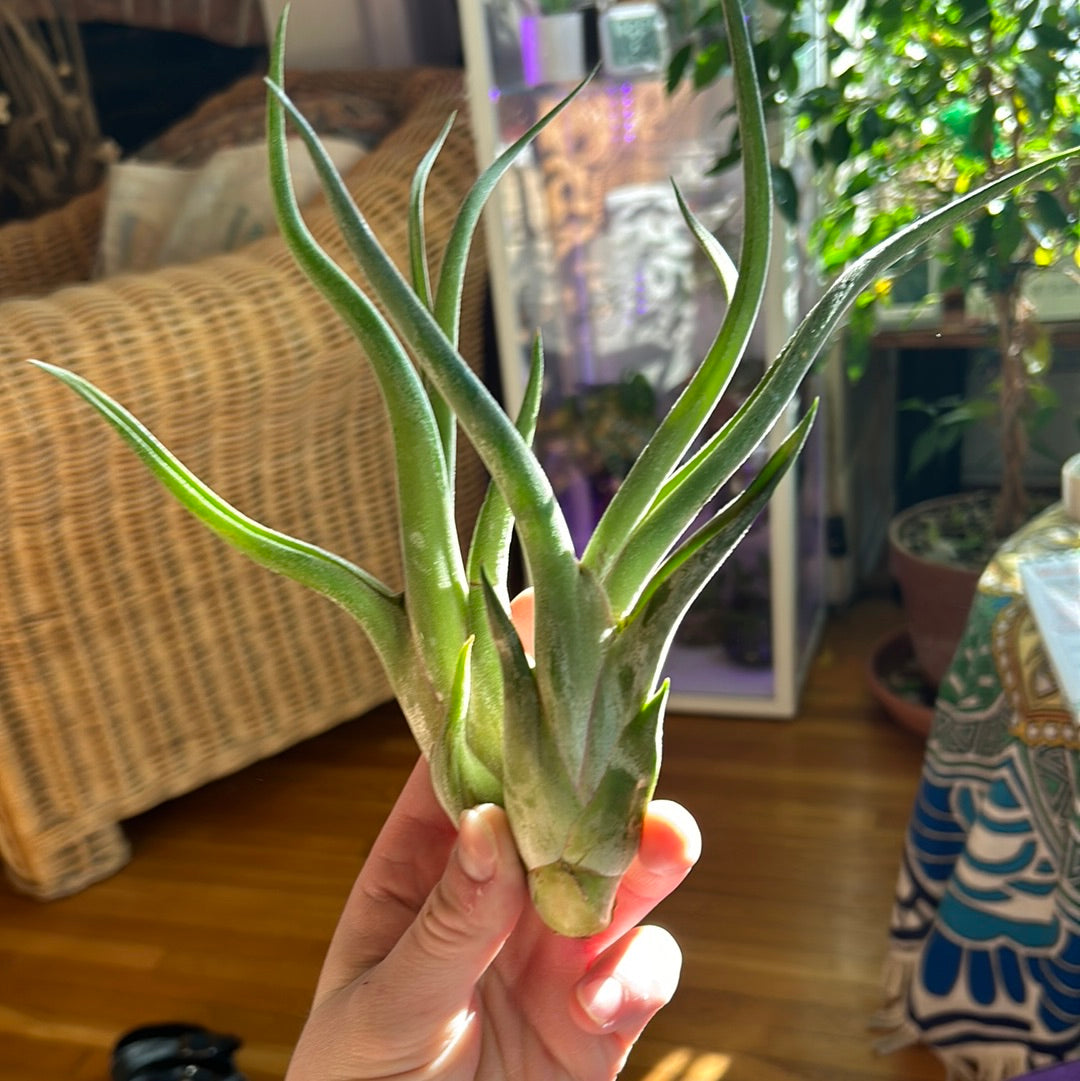Tillandsia caput medusae
Tillandsia caput medusae
Share
Tillandsia Caput Medusae
Tillandsia Caput Medusae, named after the snake-haired Gorgon from Greek mythology, is a fascinating and otherworldly air plant that commands attention with its striking appearance. With its long, twisting leaves that curl and cascade like the locks of Medusa herself, this plant adds a touch of drama and mystique to any indoor setting. Whether displayed on its own as a statement piece or incorporated into a larger air plant arrangement, Tillandsia Caput Medusae is sure to captivate with its unique charm.
Plant Care Needs
• ☀: Prefers bright, indirect sunlight. Can tolerate some direct sunlight, particularly in the morning or late afternoon, but avoid prolonged exposure to intense sun.
• 💦: Mist the plant with water 2-3 times a week, or submerge it in room temperature water for 20-30 minutes every 1-2 weeks. ***Shake off excess water and allow it to dry upside down to prevent water from pooling in the center.***
• 🪨: Not applicable, as Tillandsia Caput Medusae is an epiphytic air plant that does not require soil to grow. Can be displayed in decorative containers, shells, or mounted on driftwood or rocks.
• 🌡️: Prefers temperatures between 50°F to 90°F (10°C to 32°C). Protect from extreme heat or cold.
• ☁: Adaptable to normal indoor humidity levels but benefits from occasional misting to increase humidity, especially in dry indoor environments.
• ✂: Can be propagated by dividing offsets or pups that form at the base of the plant. Gently separate the pups from the mother plant and plant them in their own containers or displays.
• ⚖: Low maintenance. Suitable for both novice and experienced plant enthusiasts.
• 💭:
- Fertilize with a diluted air plant fertilizer once a month during the growing season (spring and summer).
- Avoid placing Tillandsia Caput Medusae near heating or cooling vents, as extreme temperature fluctuations can stress the plant.
- Display the plant in a bright, airy location with good air circulation to prevent rot and ensure optimal growth.
Couldn't load pickup availability









